Genre: Action/Strategy Developer: Bullfrog Productions Publisher: Domark Players: 1 Released: 1995
These days, the name Peter Molyneux has fallen into a bit of disrepute, and not quite undeservedly. He always had a penchant for overpromising and underdelivering when it came to his releases, and the gap between hype and end results only got wider the farther the available technology advanced. However, throughout the 1990s his reputation fared far better. For Amiga or PC gamers, the name Peter Molyneux, and in particular that of his first company, Bullfrog Productions, stood for highly creative, boundary breaking games offering an immense feeling of control and real-time gameplay. At a time when strategic games were mostly turn-based and the term RTS had yet to be coined, most products turned out by Bullfrog delivered both action and tactical gameplay. They forced players to plan carefully and perform tasks while they mercilessly progressed and the computer-controlled enemy (or sometimes a second player) could ruin your day while your attentions were bound to a different area of the map. Titles like Populous, Theme Park, Dungeon Keeper, and Magic Carpet were immense hits, or at the very least, critical and popular darlings.
For Amiga gamers in particular, Syndicate is usually seen as one of the best games of its era. It’s frequently listed on top game rankings for the platform, as well as for DOS games of the 1990s. Naturally, if a game was that successful, it usually had to be brought to respective consoles as well. So, Syndicate was quickly ported to the Super Nintendo, the Sega Genesis, the Atari Jaguar, the 3DO, and the Sega CD, which is what we’re looking at today.
Syndicate is set in a dystopian future heavily inspired by the movie Blade Runner. While nations still exist on paper, in reality corporations are running things from the shadows. Said organizations wage a secret war for global domination. To that end, they pull hapless citizens off the streets, implant a control chip into their brain, upgrade their limbs with cybernetics, equip them with high-tech gadgets and weaponry, and send them back into the streets to carry out missions like assassinations, abductions, industrial espionage, or all-out warfare. The player takes on the role of one such syndicate. At the outset, you don’t control more than four marginally upgraded cyborgs in your freezer and your own R&D team. The game is roughly split into two halves: Research and management on the one hand, and active missions on the other. In the former, you invest money into researching new weapons or upgrades, enhance and arm your cyborgs, set the tax rate for regions that are already under your control, or select the next mission to send your agents into. In the latter, you control up to four cyborgs from an isometric perspective, select the weaponry or gadget needed for the situation, guide them to their targets and execute these… sometimes literally. During these missions you encounter harmless civilians, policemen who ignore your agents as long as they don’t spot them with a drawn weapon (in which case they first warn and then engage), and opposing agents armed and enhanced to various degrees. The more the game progresses, the tougher the enemies get, and the more complex your objectives become.
There are a couple of things all versions of Syndicate have in common. The management side, where you research new weapon designs or cybernetic enhancements for your agents, urges you to weigh your options. How much money do you wish to invest in R&D, how much into actively equipping the agents at your disposal? In theory, this means you have to plan carefully in order to find a sweet spot between technological progress and the difficulty of upcoming missions. In practice, the management side is hopelessly broken. Time passes regularly even while not on missions. If you wait, you can see taxes from your controlled regions pouring in, which you then divert into R&D and weapon purchases. However, there are hardly any negative consequences to that. If you set the tax rate for a controlled region too high, it may enter unrest, which means that you will have to repeat the corresponding mission to regain control. If the tax rate is low enough, this never happens. So, if you just complete a couple of missions, then stay on the management screen and leave the game running for a few hours, you won’t have to worry about money or research.
The layout and structure of each mission is similar across the platforms with a few adjustments made to the console versions. You can send up to four agents into any available region, and you take control of them once the mission starts. The action takes place via an isometric perspective, and your point of view always starts centered on your agents. This may lead seasoned console gamers to assume that this part plays like an action shooter. If you use that approach, you will hopelessly fail. In many missions, if you don’t plan the routes to your objectives in advance, carefully weighing where to go first or what to accomplish in which order, you may run into overwhelming firepower or won’t be able to reach your target in time. So a more strategic approach is generally favorable. For planning your approach, the map is a helpful tool. A scanner wave is centered over your central objective(s), giving you an idea of where your targets are and how far away you are. You can also see impassable obstacles, pathways you can use, and people moving on the map. White dots represent your agents, and colored dots stand for enemy agents, police, and civilians. All those can also be turned into friendly drones that follow you and even fight by your side (more on that later).
During missions you can select each agent individually and send them to different places or select and control them all as a group. Each agent can also be injected with three different kinds of drugs that can temporarily enhance their intelligence, perception, and adrenaline (or “IPA” levels, as the game calls them). Intelligence allows the agents to autonomously react to threats, e.g. to automatically fire upon an enemy agent approaching, perception improves their aim, and adrenaline enhances their speed. Leaving these IPA drugs at full level all the time progressively reduces their effectiveness, so you should always turn them down again when there’s no danger about. You can also discard guns if their ammunition is empty (though if money is a concern you should always reconsider doing so, since you need to buy that weapon again afterwards) and pick up discarded weaponry from fallen enemies. Occasionally you need to commandeer some sort of transport in order to get in or out of a building or an otherwise walled-off section of the level. If an agent dies during a mission, he is gone forever, though the objectives can still be completed as long as at least one cyborg remains alive. Should the last one fall as well, a mission can be tried again as long as you have agents in your freezer, so it pays to keep substitutes upgraded as well. Should all cyborgs die and no backups remain, it’s game over.
The weapons and gadgets you can equip your agents with have a nice range of diversity to them, though the armaments differ greatly in usefulness. At first, you only have access to weak pistols, but given time and research you unlock more guns and gadgets. One of the most powerful tools at your disposal is the so-called persuadatron. It “hacks” into the brain implants every person has in the future and converts them to your side. Civilians can generally be instantly turned into allies and even pick up and use discarded weapons should they come across any. Once you’ve converted a few to your side, the persuadatron also starts working on policemen. When the crowd following you is big enough, you can even turn enemy agents, depending on their own enhancement level. On levels with lots of civilians around, this can quickly turn you into an unstoppable horde. Be careful, though. You cannot open fire on allied targets, so should you accidentally convert an assassination target, the level can’t be completed unless you manage to get your target killed through an explosion, ideally without killing the rest of the squad. Luckily, there are a few ways to accomplish the latter, either through Gauss rockets (one of the most powerful weapons, though they only hold three rockets each), time bombs (otherwise useless one-time gadgets, but at least they’re relatively cheap) or by blowing up a car by shooting it enough times.
Syndicate was released on a ton of platforms, and there are a couple of differences between versions. First and foremost, none of the console ports uses a mouse, which is already a huge strike against them. The game was originally designed around mouse control, allowing you to command everything nice and directly via a point-and- click interface, allowing for fast reactions should the action start to boil over. Having to direct a cursor with a digital gamepad always feels clunky and slow. This even turns the management side of the game into a bit of a chore. Not even the SNES or Genesis ports use a mouse, even though both consoles had that accessory available by 1995.
From a graphical perspective, the 3DO and Jaguar versions are the most similar to the computer versions – same visuals, same levels, and same structure to the interface. Of the two, it’s actually the Jaguar port that handles better since its keypad controller allows for a series of command shortcuts a regular gamepad couldn’t provide. It even offers four different zoom levels during missions! Frankly, if you want to play Syndicate on a console, you should probably pick up the Jaguar version because of all the 16- or 32-bit-ports, this one feels closest to the computer versions and actually plays the best.
But we’re here to look at the 16-bit-games, and in particular the Sega CD version. Here’s a little trivia: The Mega CD version of Syndicate was one of the last games released for the platform in PAL regions. Otherwise, there’s not too much to say. The Genesis port and the Sega CD version are virtually the same game. They play identical, look identical, and use identical passwords for saving – no system saves for CD consoles either. There are only minor differences. The soundtrack has been completely replaced, as the additional disc space allows for more elaborate tunes. These new tracks are very nice and atmospheric but don’t do much to further elevate the game. There’s also a longer intro sequence that’s almost identical to the DOS version of the game. The number of missions being the same in both the Genesis and Sega CD ports is a particular disappointment. By 1994, both the Amiga and DOS PC versions had received an add-on called “American Revolt” that offered new, tough-as-nails missions and a handful of new weapons. Those would’ve made a great supplement for the Sega CD. Instead, a lot of disk space remains empty.
There are a couple of key differences between the Sega Genesis and the Super Nintendo versions of the game, even though they look similar at first glance. In both versions, during the mission sequences the control bars have moved from the left side to the bottom of the screen. Also, the map isn’t always visible on the screen. Rather, it has to be accessed by pausing the game with the start button. However, the contrast and color scheme is brighter in the SNES version. This actually works to the game’s disadvantage, as it ruins the mood of a dystopian cyberpunk future; the darker colors of the Genesis actually work far better in that regard. The SNES port also uses anime-style portraits for the cyborg agents, which look completely out of place. During missions, the Genesis offers a better resolution than the SNES. While still smaller than on PCs, this allows you to see more of your immediate surroundings. The Genesis also retains some of the more gruesome animations and weapons the original game had to offer. So, if Sega gamers feel like it, they can roast their way through the mission with the flamethrower to their heart’s content, unlike players on the Nintendo port. The only advantage the SNES version holds over the Sega outings is support for two players; multiplayer was announced for the Genesis as well but never implemented.
A major improvement over the Super Nintendo port though (or, in fact, over any other console port) is that the Genesis/Sega CD game allows directly steering individual agents using the D-pad, rather than forcing players to solely use point-and-click controls with a gamepad even during action scenes. This makes controlling your cyborgs vastly more precise and faster than in any other console version! It does tend to make the game feel a tad more like an action shooter than other versions but not much. Still, taking direct control – especially of a single, beefed up agent – makes most missions easier to accomplish than trying to herd a group of four agents with, frankly, rather horrendous pathfinding AI. Despite this advantage, the controls are still cumbersome. Button presses are context-sensitive and can change upon the given situation, and for specific actions you need to cycle through your options using the A and C buttons, which can turn hectic moments into a hot mess.
The Genesis version suffers from a lack of mouse support and takes a hit in resolution, turning a precise strategic action game into a hassle to control. Still, it’s one of the better console versions available of the computer game classic. The color scheme and soundtrack fit nicely into the dystopian sci-fi-setting, and the ability to control agents directly with the D-pad makes the action much more accessible than forcing the player to point-and-click controls on a game pad like in other ports. It’s just a shame that once more, the Sega CD wastes its potential on significantly improving the game over its cartridge counterpart. A CD-based soundtrack and a longer intro alone don’t justify getting a CD attachment, though it might just barely suffice to push the game from a 6+ to a 7- rating. If it had at least used the disc space available to include the expansion pack missions Amiga and DOS gamers received, it would’ve made an impressive package. The way it is, Syndicate on the Sega CD is a decent port, and as a game it is quite unique compared to the rest of the available 16-bit-library. It’s not, however, worth hunting down a disc if you already own the cart version. And it certainly can’t hold a candle to the superior PC or Amiga versions… or the Jaguar port, for that matter.
SCORE: 7 out of 10

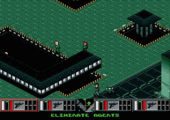
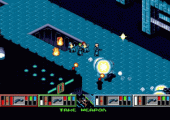
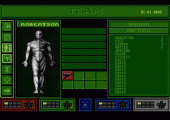
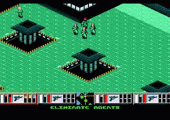
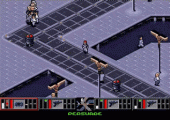
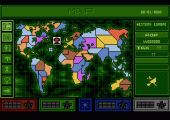
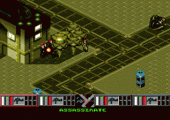
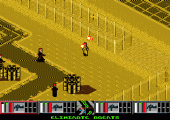
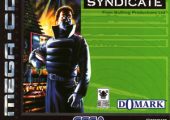
Recent Comments